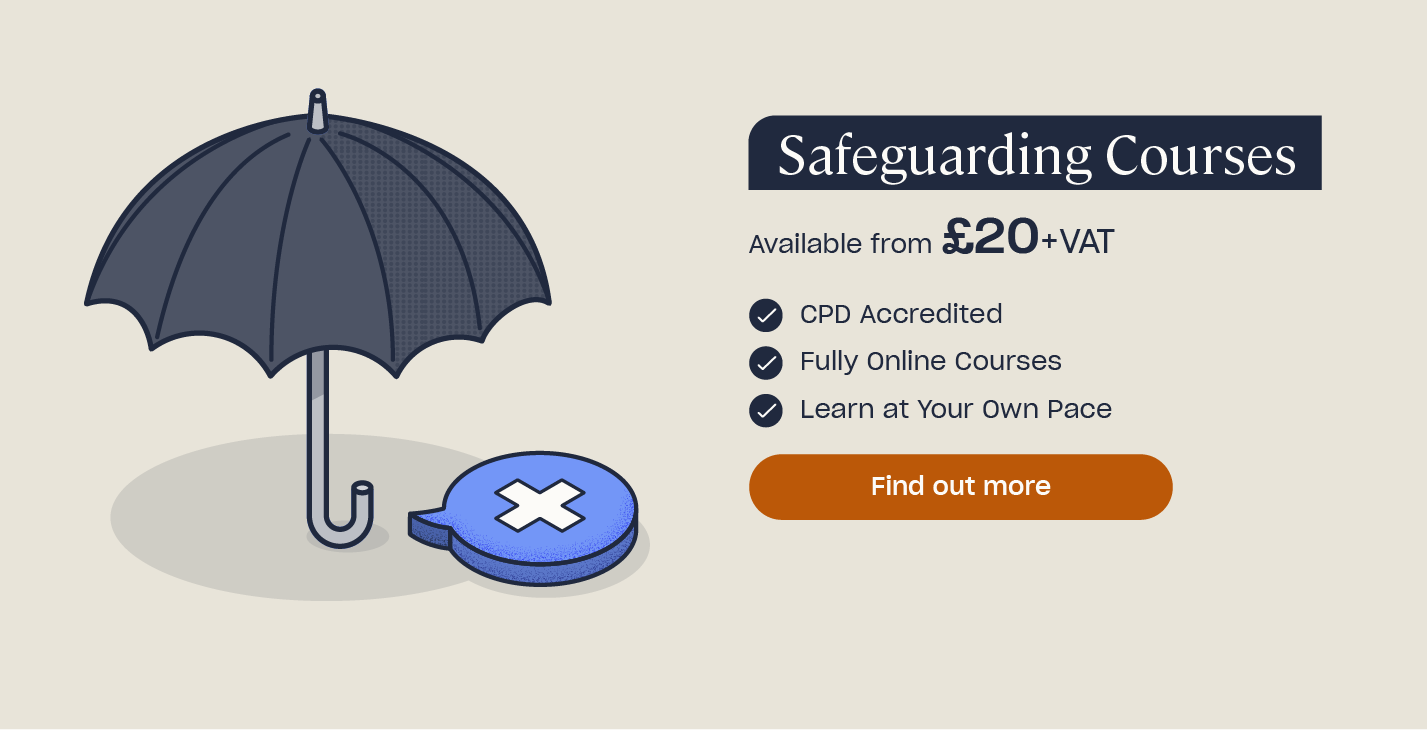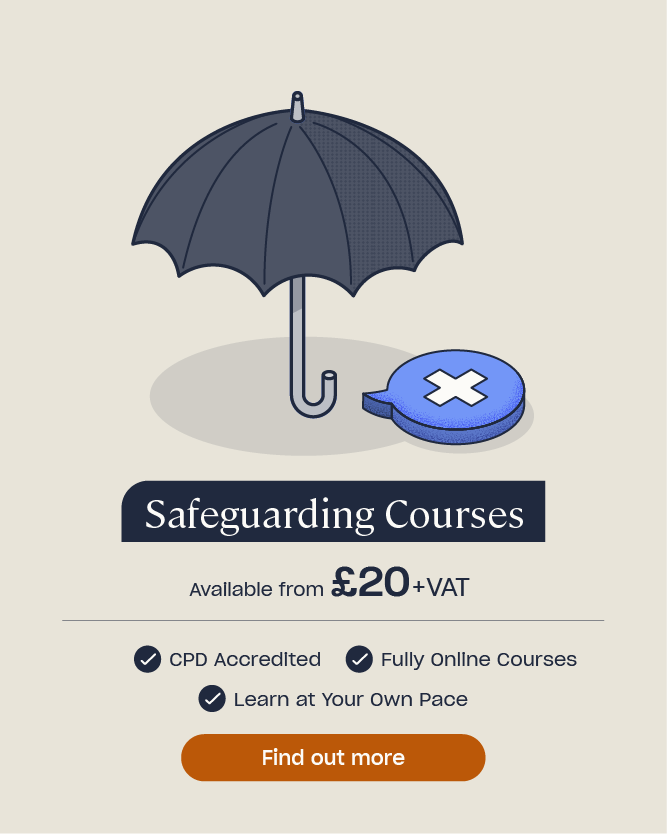What is Professional Curiosity in Safeguarding?
If your work involves supporting and caring for children or adults, regardless of the setting, having effective safeguarding in place is a top priority. Achieving effective safeguarding can be challenging, especially when dealing with complex situations. It can often be difficult to decide when to take action, what type of action is needed, or whether any action is necessary.
Some individuals in your care may require additional levels of safeguarding. However, it is not always obvious when this may be. Children and adults often attempt to keep their problems hidden, and they may be unwilling or feel unable to confide in somebody. This is an example of where professional curiosity can be of use.
In this article, we will explore the meaning of professional curiosity in more detail and how it relates to safeguarding. We will also describe ways to be professionally curious and look at examples of where this may be necessary.
What is Professional Curiosity?
Professional curiosity is an important part of keeping children and adults safe. It is a term used in safeguarding guidance for many settings, including schools, care homes, hospitals and for roles in the wider community. Professional curiosity involves using your skills and knowledge to recognise when there may be a need to investigate a situation further.
As a professional working with children and adults, you are in a direct position to notice anything concerning. You may be worried that a person is suffering some form of maltreatment or struggling to manage a mental health issue. Perhaps you suspect that someone is involved in criminal activity and is being exploited.

These are a few examples of when you may need to use professional curiosity to fully explore what is happening so that action can be taken to safeguard that person. Remember, too, that some individuals will be more at risk, and you should use your knowledge and understanding to be extra vigilant in these circumstances.
For example, looked after children (LAC) may be more at risk. You can read more about how to safeguard looked after children in our article here. Some adults, such as those with disabilities, learning difficulties or mental health issues may also be at greater risk. Our article: Safeguarding Adults: What is it and Who is it for? can help you to identify the additional support these people may require.
The term ‘professional curiosity’ links closely with ‘respectful uncertainty’. This means attempting to view a situation with a critical eye. You should proactively ask questions and appreciate that the information given to you by the person themselves or perhaps their carers may not always be the truth. This process must be carried out respectfully, as otherwise, relationships can become damaged, and you may risk losing the trust of the person or their carers.
Why is Professional Curiosity Important in Safeguarding?
As we have discussed, professional curiosity can enable you to identify when there may be an issue with an individual in your care which needs investigating further. Noticing any concerns signs and addressing these can be the difference between a person receiving the help they need and continuing to suffer.

Professional Curiosity and Maltreatment
The term ‘maltreatment’ refers to any form of abuse or neglect. Anybody who is suffering maltreatment requires support and intervention.
It can be challenging to identify exactly how many children and adults suffer maltreatment in the UK, as victims may be unwilling or feel unable to report what is happening to them. The NSPCC suggests that around half a million children suffer maltreatment each year, and there were approximately 541,434 concerns raised about adults in the year 2021/22.
Professional curiosity can be particularly helpful in identifying potential cases of maltreatment. As mentioned previously, it is important that information isn’t always accepted at face value. In some cases of maltreatment, ‘disguised compliance’ may occur. This happens when those around the individual, their family or carers, attempt to create a false sense of the person being safe and well. This might be because they would like to hide that maltreatment is occurring, as is common in cases of adult domestic abuse.
Anybody who experiences some form of maltreatment is at a greater risk of developing mental health problems, such as depression or anxiety, either during the maltreatment or later in life. There is also an increased risk of suicide in those who have, or are, experiencing maltreatment. For example, research by Agenda Alliance, an organisation that campaigns for the well-being of all women, found that those who had experienced domestic abuse were three times more likely to take their own lives.
Looking to Learn More?
Our range of safeguarding courses can teach you more about identifying signs of maltreatment, and other indicators that a person may require additional support, care or intervention. These include Introduction to Safeguarding Children, Designated Safeguarding Lead and Level 3 Safeguarding Adults.
Professional Curiosity and Child Safeguarding
Staff working in schools or in children’s social care are particularly well-placed to recognise when a child is in need. Their professional curiosity may uncover a situation which can easily be addressed, such as a child struggling to fit in with their peers or perhaps a child who has become stressed about upcoming exams. If you work in a school, take a look at this article to support you in achieving effective safeguarding: How to Create an Effective Culture of Safeguarding in Schools.

Professional curiosity also plays a vital role in uncovering more serious cases of child maltreatment. Unfortunately, in some cases where a child has suffered serious harm, a lack of professional curiosity has been highlighted.
For example, a serious case review completed by Calderdale Safeguarding Children Partnership, found that opportunities were missed to investigate a concerning situation further. Despite various agencies being involved, a lack of professional curiosity was cited as a reason for the severity of the maltreatment being missed. Sadly, in this case, while the child died of natural causes, it was later found that they had suffered multiple non-accidental injuries and were at risk for various reasons.
Many serious case reviews have found that if those involved in safeguarding had asked more questions, or looked into matters further, facts may have been uncovered which would have allowed for actions to be put in place to stop the maltreatment. In some cases, children’s lives could have been saved.
All set for your INSET day?
Our safeguarding INSET pack is here, and it’s yours for free! Packed full of valuable resources to help make your next INSET day run smoothly and successfully. Download your free INSET pack here.
How to be Professionally Curious
Professional curiosity is about understanding when there is a need to look into a situation further and find out more. It’s about being vigilant, acting upon concerns and not being afraid to challenge decisions you may disagree with.
Below are some top tips on how to be professionally curious:
- Know the signs to look out for: you must know what the signs and indicators are that might suggest a child or adult is in need, at risk of maltreatment, or suffering maltreatment. If you feel unsure of this, speak to a manager and ask if you could undertake some training to help you feel better equipped. Take a look at this article which offers guidance on different safeguarding training levels.
- Respectfully ask questions and investigate: being professionally curious doesn’t need to be overly intrusive or cause offence. It can be helpful to remind everyone involved that you have the individual’s well-being at heart and that, ultimately, your aim is to offer the best possible support.
- Understand the ‘whole picture’: if you are dealing with complex circumstances, take the time to understand everything fully. For example, if you believe a child is suffering neglect, take the time to understand their parent or carers’ situation. It may be that they need some support themselves, and you must be sensitive to this.

- Raise concerns: there may be occasions where your role is to raise concerns rather than act on them yourself. Always be proactive in doing this, even if you’re unsure whether there is an issue; raising your concern is an important part of being professionally curious.
- Challenge decisions: if having raised a concern, you are not satisfied with the outcome, you should challenge this decision. This is known as ‘professional challenge’ and, when done properly, can help uncover issues that may have been overlooked or missed.
We hope you have found this article informative and helpful. Professional curiosity is an essential part of safeguarding, which should happen across all settings where caring for children or adults is involved. Being professionally curious is a vital step in achieving effective safeguarding.
Further Resources
What is Adultification within Child Protection and Safeguarding?
Safeguarding Adults at Risk: What is it and Who is it For?
How to Create an Effective Culture of Safeguarding in Schools
What is Contextual Safeguarding & Why is it Important?
How Can We Work Together to Safeguard Adults?
What is Safeguarding Training & Why is it so Important?











